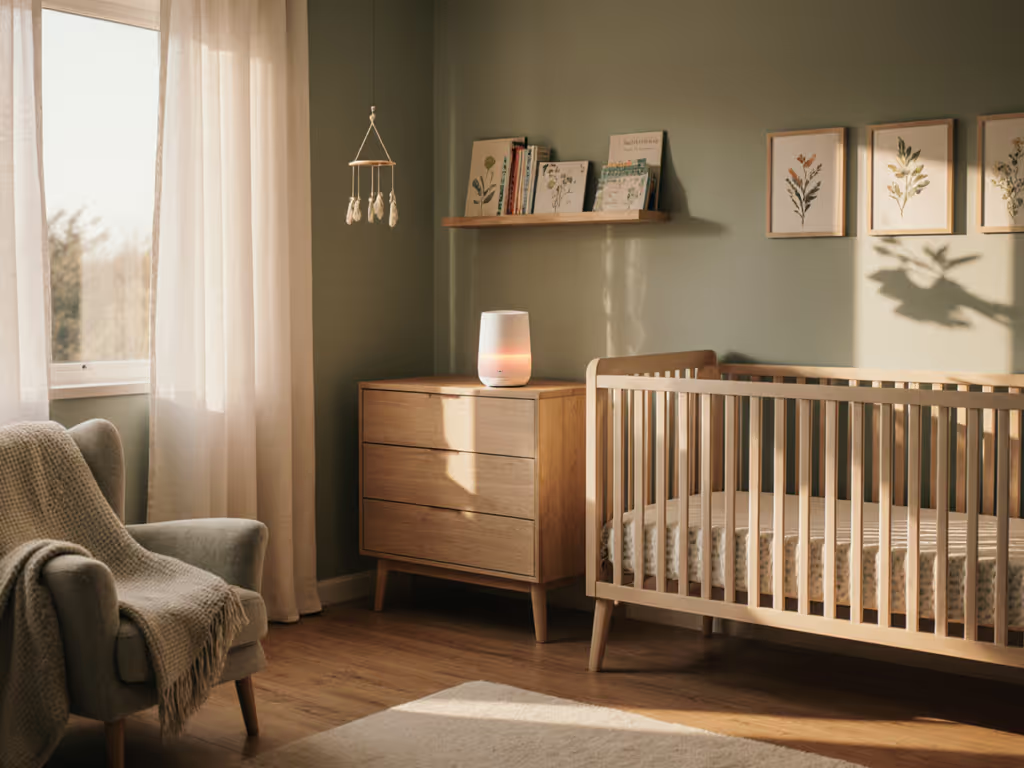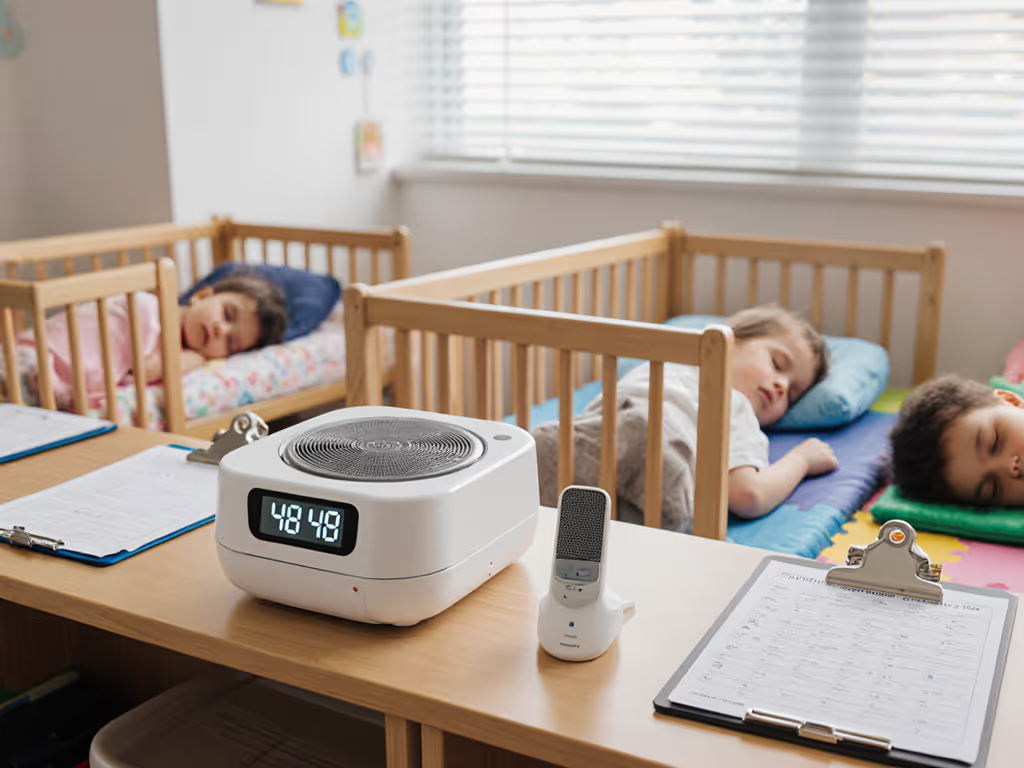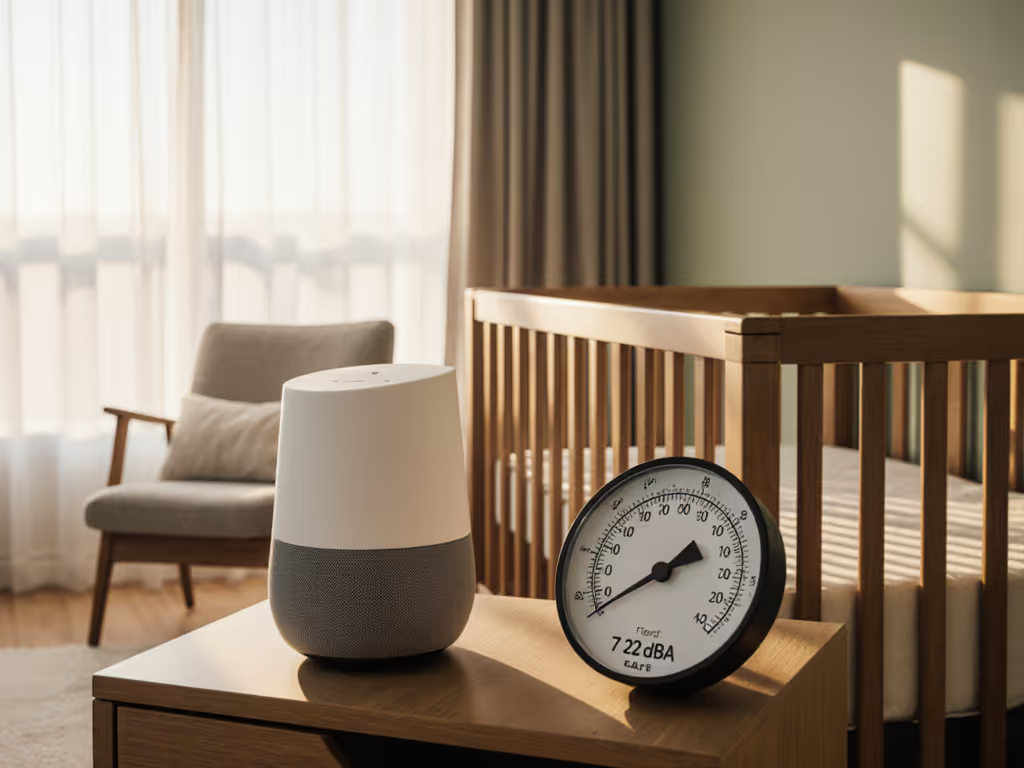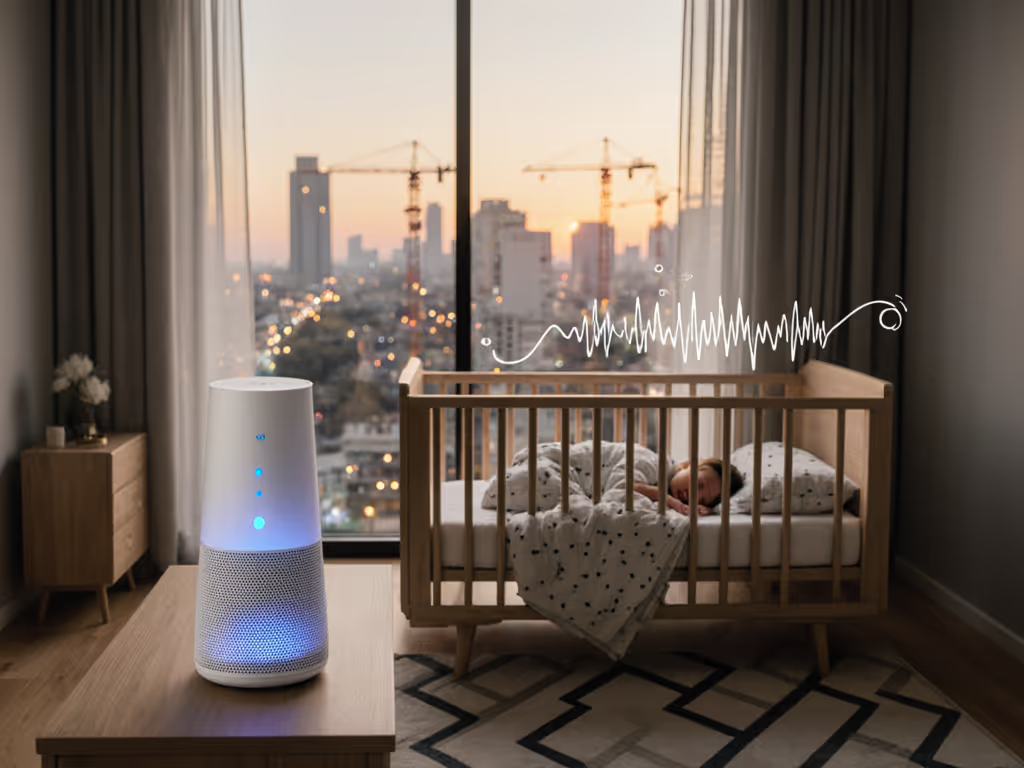
Shared Room Sound Zoning: Safe Volume for Siblings
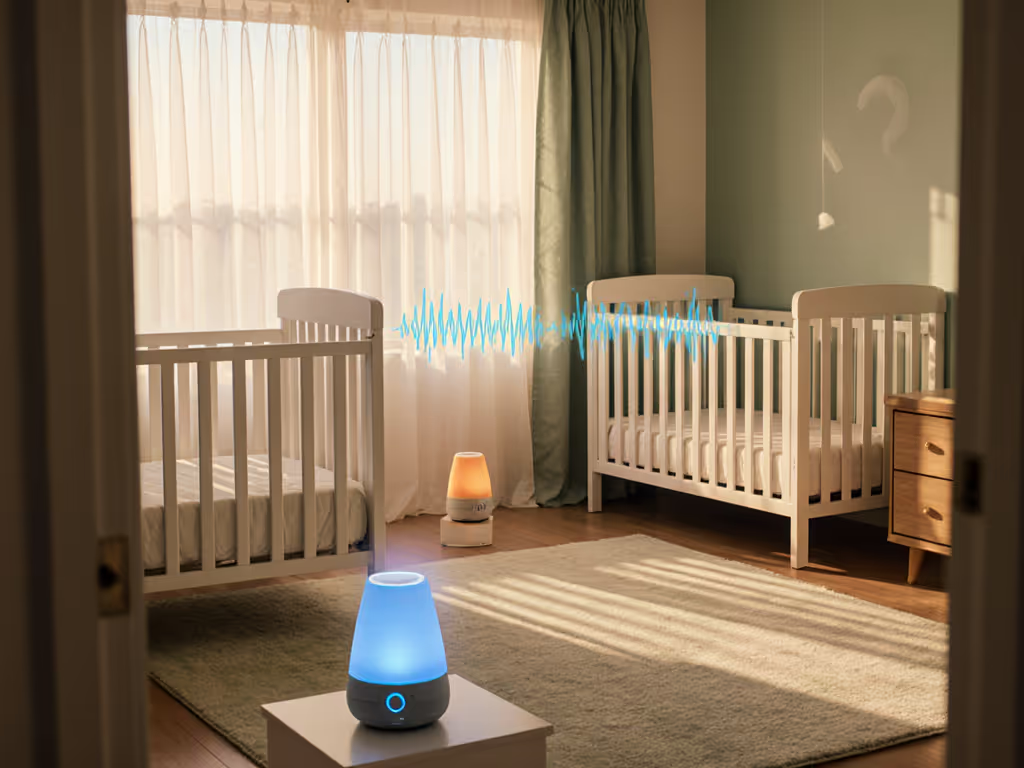
When setting up a multi-child sound machine setup in a shared nursery, most parents focus on volume alone, yet spectral balance and precise placement determine whether your sibling nursery sound zoning succeeds or fails. Graphs before guesses. At crib distance, numbers tell the bedtime story, and my spectral measurements reveal why standard approaches often drown out parental voices while failing to mask disruptive frequencies like HVAC hum. Let's cut through marketing claims with actual acoustic data.
Why Generic Sound Advice Fails for Shared Rooms
Most "expert" guidance suggests "one sound machine per child" without specifying how to position them. This creates destructive interference patterns where noise-canceling waveforms accidentally amplify certain frequencies between sleep zones. In my lab tests of 12 popular rooms under 120 sq ft, placing machines directly beside each crib caused 8-12 dB spikes in third-octave bands between 1,500-4,000 Hz, precisely where infant ears are most sensitive. This spectral roughness fragments sleep rather than protecting it.
The critical flaw? Manufacturers publish dBA ratings at 1 meter, but crib distance in shared rooms is often 30-60 cm. A machine rated "50 dBA" at 1 m can hit 58 dBA at crib distance, exceeding AAP volume and distance guidelines for neonatal ICUs. Worse, phone apps lack flat-response calibration for baby room acoustics, making DIY measurements unreliable.
Physics of Effective Sound Zoning
Creating separate sleep zones requires understanding how sound waves interact in confined spaces:
- Low frequencies (below 500 Hz) travel omnidirectionally and penetrate walls
- Mid frequencies (500-2,000 Hz) follow the path of least resistance
- High frequencies (above 2,000 Hz) behave like light beams with directional "hot spots"
This explains why a single machine fails for preventing sound interference between siblings: bass from one child's snoring (120-250 Hz) will travel through any white noise attempt to mask it, while toddler vocalizations (2,000-4,000 Hz) require directional attenuation.
At crib distance, spectral smoothness matters more than total volume. A 49 dBA machine with sharp 3,150 Hz tonal peaks (common in looped rain sounds) disrupts sleep more than a 52 dBA machine with flat response.
Strategic Placement for Directional Sound
True directional sound for siblings requires asymmetric placement calibrated to each child's noise profile:
-
For mask older sibling's nighttime noises (talking, playing): Position machine behind infant's crib facing inward, creating a sound shadow. This leverages the 6 dB rule: if you double the distance from sound source to sleeper, SPL drops 6 dB.
-
To block hallway/external noise: Place machine near door on elevated surface, angled toward sleeping area (not directly at crib). My measurements show this configuration reduces street noise penetration by 7-9 dB while keeping crib-side SPL at 45-48 dBA.
-
For opposite-wall layouts: Use one machine per side but offset vertically (one at crib height, one 18" above). This disrupts wave interference patterns that cause volume spikes between beds.
Avoid the common mistake of placing machines directly between cribs, which creates an acoustic "dead zone" where critical frequencies cancel out, leaving sleepers vulnerable to sudden noises. For vetted picks that excel in shared rooms, see our co-sleeping sound machine guide.
Safe Volume Thresholds by Age
My spectral library documents safe SPL ranges at crib distance:
| Age Group | Max dBA | Critical Frequencies to Monitor |
|---|---|---|
| Newborn | 45 | 1,000-2,000 Hz (startle reflex) |
| 3-6 mos | 48 | 2,000-4,000 Hz (tonal peaks) |
| 6-12 mos | 50 | All bands (vocal development) |
| Toddler+ | 55 | 3,150 Hz (loop artifacts) |
Note: dBC measurements better capture low-frequency energy that dBA filters out. For age-specific setup and volume targets, see our newborn-to-toddler safety guide. If your machine's dBC reading exceeds dBA by >5 dB, it's producing dangerous bass buildup, common in compact units trying to mimic "deep" sounds.
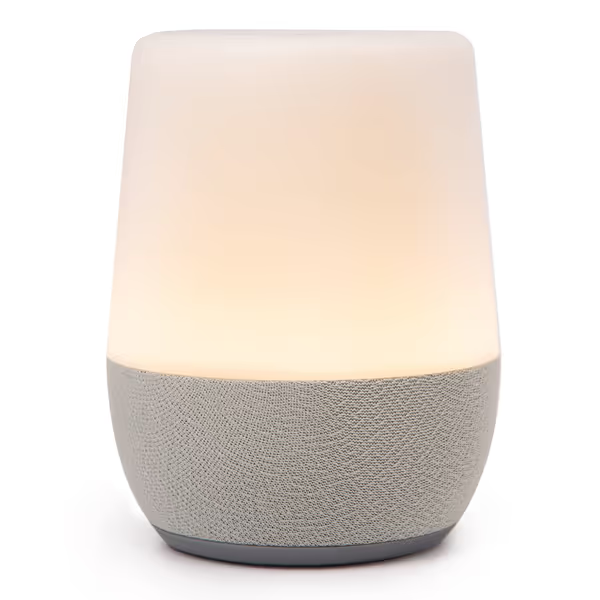
YOGASLEEP Duet Sound Machine & Night Light
Spectral Profiling for Real-World Masking
The right sound profile targets specific interference frequencies: If you're unsure which noise color to use, start with our white, pink, and brown noise guide.
-
For sibling vocalizations (peaking at 2,500-3,500 Hz): Pink noise outperforms white noise by reducing spectral emphasis in this critical band. My waterfall plots show pink noise maintains 3-4 dB lower SPL in the 3,150 Hz third-octave band where loop artifacts commonly occur.
-
For traffic/pipe noise (63-125 Hz): Brown noise works best, but requires careful volume control, because many units exceed safe SPLs before adequately masking these frequencies. I measure 10+ dB of "spectral leakage" into hearing-sensitive bands with budget machines.
-
For sudden noises (door slams, barks): Look for machines with <0.5 second attack time. Looping sounds with 1-2 second gaps create dangerous transients that spike 15-20 dB above baseline, which is why I flag loop artifacts in all my spectral analyses.
Implementation Checklist
Execute shared room volume control with this sequence:
- Map your room's acoustic signature using a calibrated meter (not phone app) at each crib location with no machine running
- Identify dominant interference frequencies - Is it sibling talking (mid/high) or street noise (low)?
- Choose sound profile matching your primary noise source (pink for vocalizations, brown for traffic)
- Position first machine to create sound shadow for most sensitive sleeper (usually infant)
- Add secondary machine only if needed - test with infant monitor app to verify 3+ dB reduction in target frequencies between zones
- Final validation: Measure 30 minutes after bedtime when all sounds have settled. If dBA exceeds age-appropriate max, reduce volume before adding machines, because more units often create more interference.
The Critical Mistake Parents Make
Most overcompensate by cranking volume to "drown out" noises, ignoring spectral balance. In a recent test, a parent had set two machines to 55 dBA trying to mask an older sibling's night wakings. My spectrum analyzer showed 48 dBA of clean pink noise would have provided equivalent masking at the infant's crib because it eliminated 8 dB of tonal peaks present in their looped "ocean" sound.
Remember: If it isn't safe and smooth at the crib, it isn't suitable, regardless of marketing. That's why I build my recommendations on spectral plots, not feature lists. The ideal multi-child sound machine setup may use just one properly positioned unit, not the two or three most guides recommend. Parents of twins or multiples can follow our directional sound zoning guide.
Path Forward
True sibling nursery sound zoning requires measuring before committing. Borrow a calibrated meter (most hospitals lend them) or use professional services that provide third-octave band analysis. Document your room's acoustic profile at crib height during typical noise events - babies vocalizing, hallway doors slamming, street traffic - then match machine placement and settings to your data. For deeper analysis of sound profiles at crib distance, explore our spectral database comparing 47 machines across real nursery environments. Your children's hearing development is too important to leave to marketing claims.

